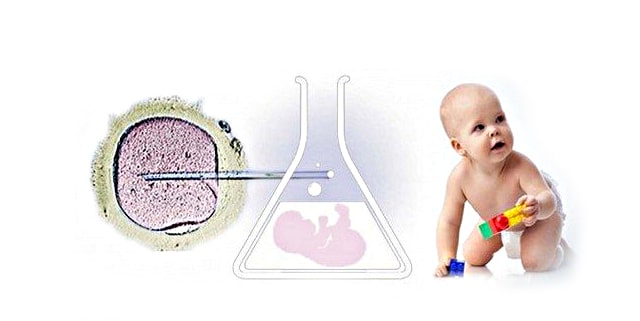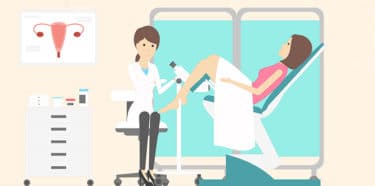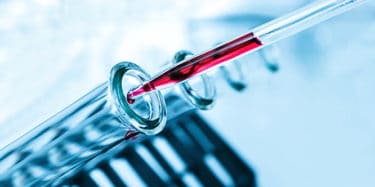In vitro fertilization (IVF) is an effective treatment option for those suffering from infertility, and increases chance of pregnancy. It is the most effective method of assisted reproductive technologies, and is generally preferred when other treatments do not work. However, not every couple may be eligible for this treatment. Therefore, prospective couples undergo a health screening first. If the doctor approves in vitro fertilization option, couple should expect a challenging treatment process in several stages. The content of treatment consists of sperm fertilization in the laboratory environment of mature eggs collected from the ovaries. Then fertilized egg (embryo) is transferred to the uterus. Treatment takes about a month, but when the stages are divided into different parts, the procedure may take longer. It is a challenging and expensive process, and the likelihood of success depends on many factors, such as age and cause of infertility.
Table of Contents
What is in vitro fertilization (IVF)?
It is a pregnancy that occurs when a woman’s egg is fertilized with a man’s sperm in the laboratory and transferred to the uterus. In vitro fertilization (IVF) means fertilization outside the body. It is one of the most common assisted reproductive technologies used as a last resort for increasing fertility.
This procedure uses special medical techniques to help a woman become pregnant. It is a complex procedure and requires healthy psychology throughout the process.
Why is IVF done?
The IVF method is applied to help a woman get pregnant. In addition,
- It is a useful option for parents with a genetic disease who are at risk of passing the disorder to their babies.
- It may be an option for women who will receive cancer treatment, such as radiotherapy or chemotherapy, which may impair fertility.
Eggs collected from the ovaries prior to cancer treatment can be frozen and stored for future use with or without fertilization.
How is IVF done?
In vitro fertilization (IVF) is a procedure in which sperm fertilization of the egg is performed in a laboratory environment using technological means. The fertilized egg is placed back into the uterus with the help of medication and surgical procedures.

The process usually works as follows:
- Drug treatment that matures the eggs, and follow-up of the process
- Egg collection by a small surgical procedure
- Combining eggs with sperm and fertilization
- Embryo transfer
Pregnancy occurs if any of the embryos settles inside the uterus.
Types of IVF
- Classic IVF: In fertilization process in laboratory environment, sperm and eggs are mixed and expected to be fertilized naturally.
- Microinjection (ICSI) IVF: A sperm is taken by a fine needle and injected directly into one of the eggs.
The specialist will choose one of two types of IVF treatment according to the characteristics of the couples in order to achieve the highest probability of success.
IVF treatment
Any couple who cannot have a baby naturally despite regular unprotected intercourse for 1 year can apply for this treatment. It can be considered as a last resort if other types of assisted reproductive technologies do not work.
However, not every couple is suitable for this treatment. In addition, even if the couples meet all criteria, the result may not be successful. Everyone’s response to treatment is different.
IVF selection criteria
IVF is recommended for women with the following health conditions:
- 35 years and older: When the probability of age-related fertility decreases
- Obstructed or damaged fallopian tubes that cannot be corrected by surgical intervention: It may be caused by pelvic inflammation – inflammation of the upper reproductive organs – disease or previous reproductive surgery.
- Decreased ovarian function: Sparse or incomplete ovulation
- Endometriosis (chocolate cyst): One can not become pregnant despite medical and surgical treatment
- Uterine fibroids: Benign cysts
- Uterine shape disorders that prevent natural pregnancy
- Unexplained infertility on both sides after other treatments fail
IVF decision process
- If you have problems having children, first you should go to a gynecologist.
- Medical and fertility history is questioned during the physical examination of the couples.
- Tests can be applied to women to see their hormonal levels and how well their ovaries work. An ultrasound scan or x-ray can also be taken to see if there are any obstructions or structural problems.
- Men may be asked for a semen sample to test sperm quality.
- First, cheaper and easier reproduction technologies are tried. Some lifestyle changes may also be suggested to help fertility. IVF method can be considered when all the options are consumed.
If the IVF is the most appropriate treatment and the couple is committed to this treatment, the gynecologist will refer them to the IVF center.
What are the steps before IVF?
- Couples undergo blood tests for HIV, hepatitis B and hepatitis C.
- The cervical scan (smear) test of the female patient is updated.
- If genetic origin of couples is prone, blood tests for sickle cell anemia and thalassemia (Mediterranean anemia) can be performed.
- The doctor investigates the ovarian reserve to predict how the ovaries will respond to IVF treatment. Antral follicle count is measured using anti-mullerian hormone level in blood or vaginal ultrasound scan. The result informs the doctor about the size and quality of the patient’s eggs.
- The doctor also examines the uterus by ultrasound. Thus, he/she can investigate the health of the uterus and determine the best way to place the embryos there.
- According to the semen test, microinjection (ICSI) can be applied if the sperm of men is weak or damaged. ICSI can be part of the IVF process.
The doctor then describes the treatment plan in detail and provides information about any support or guidance that may be useful.
Stages of IVF treatment step-by-step
Each treatment plan is individual, and varies from patient to patient, but usually consists of the following stages:
Stage 1: Suppressing the natural menstrual cycle
Hormone drugs are taken by daily injection for about 2 weeks. They are also available as a nasal spray. The aim is to increase the effect of drugs, which will be used in next stage.
Stage 2: Increasing egg supply
When the natural menstrual cycle is suppressed, follicle stimulating hormone (FSH), ie fertility hormone, is taken by injection for 10-12 days. FSH increases the number of eggs produced by the ovaries. This means that more eggs can be collected and fertilized.
Stage 3: Checking progress
A vaginal ultrasound scan is performed to monitor the ovaries and in some cases blood tests. Approximately 34-38 hours before the collection of the eggs, a final hormone injection is given to help eggs mature.
Stage 4: Collecting the eggs
The matured eggs are collected by a small surgical procedure known as follicular aspiration under anesthesia. A very fine needle is inserted into the ovary of the patient’s vagina by ultrasound guidance, and the needle attached to the suction device sucks the eggs.
This process is repeated for each ovary separately. It takes about 15-20 minutes and the patient can return home on the same day. Some women may experience cramping or minor vaginal bleeding after this procedure.
Stage 5: Fertilizing the eggs
At this stage, a semen sample is requested from the male. The collected sperm are mixed with the eggs in the laboratory. It is checked for fertilization after 16-20 hours.
In some cases it may be necessary to inject a single sperm separately into each egg by ICSI. Fertilized eggs (embryos) continue to grow in the laboratory for up to 6 days before being placed in the uterus. During this time, the doctor monitors the fertilized eggs to ensure their separation and development.
If necessary, embryos can be tested for genetic conditions. One or two of the best embryos are selected for transplantation. Progesterone or human chorionic gonadotrophin (hCG) is then administered to help the uterine lining receive the embryo. It is usually injected into the vagina or taken as a gel.
Stage 6: Embryo transfer
When the embryos are large enough, transfer to the uterus is performed using a catheter (a thin tube) that passes through the vagina into the uterus. This stage is simpler than egg collection and is similar to the smear test, so there is often no need for anesthesia. The number of embryos to be transferred should be discussed before starting treatment. This usually depends on age of patient:
- Women under the age of 37 should have only one embryo transfer during the first IVF cycle. If one or more of the best quality embryos are present in the second cycle, a single embryo transfer should be performed. If only the best quality embryos are not available, 2 embryos can be used. In the third cycle, no more than 2 embryos should be transferred.
- Women aged between 37-39 should have a single embryo transfer if there are 1 or more first quality embryos in the first and second IVF cycles, and double embryo transfer should be considered only if the best quality embryo is not available. In the third cycle, no more than 2 embryos should be transferred.
- Women aged between 40-42 may have double embryo transfer.
If the embryo adheres to the uterine lining, healthy embryo growth and pregnancy can begin. Pregnancy tests are performed approximately 2 weeks after embryo transfer. When pregnancy is identified, the follow-up process continues until the fetal heart beat is confirmed.
During the first week, a blood test for pregnancy is performed every 2-3 days, followed by weekly ultrasound until a heartbeat is detected.
How many days does IVF treatment take?
IVF has several steps and it takes several months to complete the entire process. Sometimes the first attempt is successful, but many people need more than 1 round of IVF to get pregnant.
Success rate of IVF treatment
According to the Society for Reproductive Technology, the probability of having a healthy baby after IVF is approximately:
- Women under 35: 41% – 43%
- Women aged between 35-37 years: 33%-36%
- Women aged between 38-40: 23%-27%
- Women aged 41 and over: 13%-18%
The success of IVF depends on the age of the treated woman and the cause of infertility (if known). Young women are more likely to have a successful pregnancy. In vitro fertilization is generally not recommended for women over the age of 42, because the chance of successful pregnancy is considered to be very low.
How many times should I try IVF?
- 3 cycles for women under 40 years of age
- For women aged between 40-42 years, 1 cycle IVF treatment is recommended.
Risks of IVF treatment
Possible risks after IVF treatment:
- Fertility medications can cause side effects such as bloating, abdominal pain, mood swings, headache.
- Most IVF medications are usually taken by injection several times a day. Repeated injections may cause bruising.
- Fertility drugs rarely cause ovarian hyper-stimulation syndrome (OHSS). This is the accumulation of fluid in the abdomen and chest. Main symptoms are abdominal pain, bloating, rapid weight gain (5-10 kg in 3-5 days), less urine although getting plenty of fluid, nausea, vomiting and shortness of breath. Mild cases can be treated with bed rest. In more severe cases, it may be necessary to drain the fluid with a needle and stay in the hospital.
- During the egg placement phase, there is rarely the risk of a reaction to anesthesia, bleeding, infection and damage to the structures around the ovaries, including the intestine, the bladder.
- Multiple pregnancies may develop when multiple embryos are placed in the uterus. Carrying more than one baby at a time can increase the risk of preterm birth and low birth weight.
- Miscarriage
- Ectopic pregnancy may develop if the embryo is placed in the fallopian tubes instead of the uterus. Symptoms include abdominal pain followed by vaginal bleeding or dark vaginal discharge.
- IVF treatment involves lots of physical-emotional energy, time and money. Many couples may experience stress and depression during the treatment process.
It is not clear whether IVF increases the risk of birth defects. Medical research has shown that fertility drugs are not associated with ovarian cancer.
Recommendations for IVF treatment
- IVF treatment is expensive, but when choosing a IVF center, your priority should be success rates rather than price. Otherwise, there is the possibility of experiencing both financial and emotional difficulties and the negative outcome of the treatment.
- A preliminary interview with the IVF center should be made, and detailed information about the treatment process, risks, side effects and prices should be obtained.
- In vitro fertilization does not always result in pregnancy and can be both physically and emotionally challenging. You should seek advice to assist you in this process. You can also get in touch with spiritual support groups made up of people living through this process.
- Maintaining a healthy weight, avoiding alcohol, smoking and caffeine during the treatment process may increase the chances of having a baby with IVF.
- After embryo transfer, the patient should rest for the rest of the day. Full bed rest is not required unless the risk of OHSS is high. Most women can return to their daily routine the next day.
- After embryo transfer, progesterone hormone should be taken regularly at the prescribed dose. Because low progesterone in the first weeks of pregnancy can cause miscarriage.




